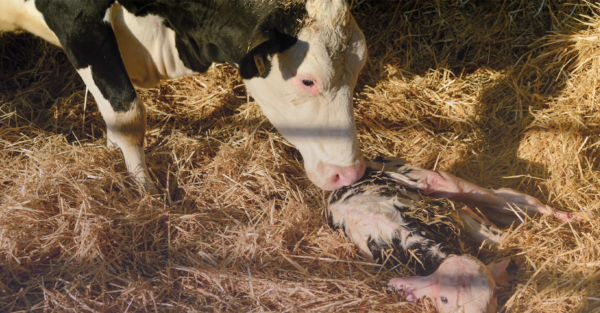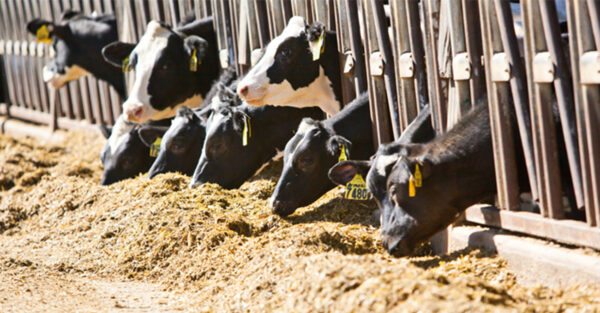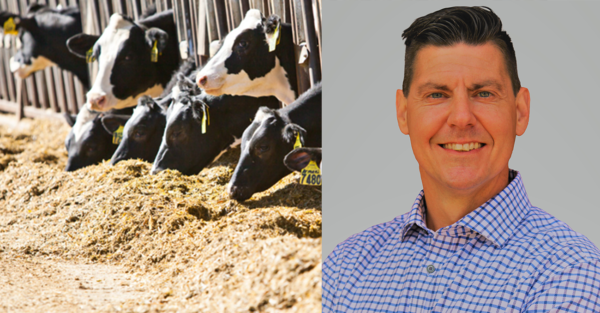Blog | Reading Time 5 minutes
From the rumen to the mammary gland – a microbial continuum to consider for ruminant performance
Over the last decade, tremendous research has been devoted to gut microbiome understanding in humans and animals. We have learned gastrointestinal microbiota plays a key role in digestive function, and also for other functions, including immunity, metabolism, and behavior.
What happens in the rumen can have far-reaching impacts
More and more, it is understood what happens in the rumen can cascade into gastrointestinal function, metabolic status, liver function, immune response, and the mammary gland. This progression is illustrated by disruptions that may start in the rumen and which will have measurable consequences on milk production for example.
Sub-acute ruminal acidosis (SARA) and its consequences are a good example.
Microbial changes occurring inside the rumen during SARA
Diets rich in readily fermentable starch, or sugars, are known to alter the composition and diversity of rumen microbial communities and their functions. In turn, this alteration leads to fermentation profile changes and a decrease in rumen pH, which characterizes SARA. Low rumen pH for a prolonged period can negatively affect feed intake, microbial metabolism, and feed efficiency as it inhibits fiber-degrading communities (Villot et al., 2018).
From the rumen to the body inflammation: the role of bacteria
It is well-established SARA induces the release of large amounts of cell-free lipopolysaccharide (LPS) in the bloodstream (Plaizier et al., 2012). LPS is a component of bacterial structures that is mainly released when bacteria die. This component has been shown to trigger inflammation patterns at the rumen-wall level. Diets associated with ruminal acidosis may induce bacterial death and also increase the turnover rate of bacteria, leading to a strong LPS increase in the rumen. In addition to LPS, other inflammatory compounds such as histamine may be released in the rumen during SARA. Histamine is produced by low-pH tolerant bacteria (Garner et al., 2002) and can accumulate in case of acute acidosis (Golder et al., 2013, 2014; Silberberg et al., 2013).
A high level of rapidly fermentable dietary carbohydrates (as with high concentrate or grain-based diets) promotes the production of volatile fatty acids(VFAs) that are an important source of energy for the animal. However, rapidly fermentable dietary carbohydrates will also increase harmful lactic acid production which may accumulate in the rumen. These high acid concentrations have damaging effects on the rumen wall, leading to papillae erosion and rumen wall destruction, and to overall increased permeability.
Because of this rumen wall permeability, inflammatory molecules such as LPS and histamine may pass easily from the rumen to the bloodstream, triggering systemic inflammation that involves a greater glucose requirement (Kent-Dennis and Penner, 2021) and increased energy demand. Inflammatory response elicited by the animal diverts nutrients that are essential for milk components synthesis (Dong et al., 2011). Histamine may also induce inflammation at the hoof level, causing laminitis (Garner et al., 2002).
In summary, SARA conditions can lead to the generation of multiple toxic compounds in the rumen. The detrimental effects of this SARA are observed beyond the rumen.
What is the impact on mammary gland health and milk components?
In addition to the reduction of energy available for body maintenance and milk component synthesis, the presence of toxic compounds in the bloodstream has an impact on immune response and inflammation in the udder.
LPS can be transported through the bloodstream to the mammary gland (Dong et al., 2011, Zhang et al. 2016) and invades the mammary gland, generating a local immune response (Aditya et al., 2020). This immune response might impair the immune defense of the teat and even destroy its barrier function (Dong et al. 2011), which increases the animal’s exposure to bacteria invasion and increase the risk of mastitis.
An inflammatory response in the udder has been found to be associated with a reduction of milk protein content (Zhang et al., 2016). Similar observations have been made with histamine (Chang et al., 2018). Moreover, in addition to affecting rumen and lower gut microbiota, SARA has been suggested to alter the microbiota of the milk (Zhang et al. 2015).
As a result, SARA can impair body condition maintenance and milk production through disturbances in the rumen. This is due to an alteration of microbial fermentation and also because of SARA effects on inflammation and immune response which can be observed beyond the rumen.
In a nutshell:
- Conditions in the rumen can influence functions outside the digestive system.
- Sub-acute ruminal acidosis (SARA) is linked to shifts in microbial populations and fermentation.
- These microbial population shifts may be responsible for the release of toxic compounds such as LPS or histamine, as well as overproduction of organic acids which may be aggressive towards the rumen wall.
- The toxic compounds will activate inflammatory and immune responses at the rumen epithelium level but also affect the entire animal because of the transfer of these molecules to the animal’s blood circulation.
- LPS molecules from digestive origins have also been found in the mammary gland and activate immune and inflammatory responses.
- At the udder, these responses may impair the immune defense of the teat and may reduce milk protein production.
- Inflammatory and immune responses consume energy that will not be used for important physiological needs such as body maintenance or milk production
- Prevention of SARA by supporting optimized rumen microbiota balance and function helps alleviate these detrimental effects.
Published Jan 2, 2022 | Updated May 29, 2023




